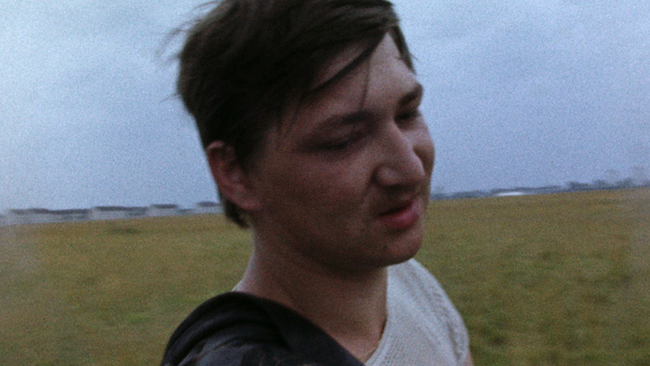
In 1970 filmmaker Volker Schlöndorff adapted Bertolt Brecht’s first play Baal into a film for West German television. Helene Weigel was so appalled by Schlöndorff’s modernist adaptation that the film was withdrawn from circulation for forty-eight years. Schlöndorff’s version of Baal is faithful more in its concept than in its adherence to Brecht’s original text. Schlöndorff re-imagines the title character as everything that inhibited leftist radicalism in West Germany. Baal is a drunk, self-obsessed opportunist who uses and abuses anyone if it serves his own agenda.
Volker Schlöndorff cast his wife and collaborator Margarethe von Trotta as Sophie before anyone had agreed to portray the titular character. Eventually these duties fell to Rainer Werner Fassbinder with the provision that Schlöndorff employ Fassbinder’s Anti-Theatre troupe in supporting roles and as extras. Suddenly the very nature of the character of Baal changed with Fassbinder’s casting. Rainer Werner Fassbinder, an artistic genius and depraved egotist, was everything Baal was. Once the two are synthesized on screen they became inseparable as a single entity wherein the lines between Baal the character and Rainer Werner Fassbinder the man began and ended were totally blurred.
Schlöndorff uses this composite of Baal/Fassbinder to his advantage. To translate Brecht’s Verfremdungseffekt to film Schlöndorff and cinematographer Dietrich Lohmann had already devised several strategies. In the realm of the strictly cinematographic the decision was made that the edges of the lens be blurred so as to re-iterate to the spectator their position as an observer. In addition, Lohmann’s work would all be handheld so as to juxtapose the manipulation of the lens and widen the gap between the cinematic image and the viewer’s suspension of disbelief. The very nature of how the audience sees Baal works as a constant reminder that what they are seeing exists only as artifice. For a final technical touch, every scene is number in a giant bold white font against a bright blue background which disrupts the organic ebb and flow of the narrative.
All of the techniques Schlöndorff employs to engulf the action of the film in the Verfremdungseffekt only serves to undermine the presence of Rainer Werner Fassbinder as Baal. The perfect marriage between actor and role in which reality becomes fiction and vice versa is antithetical to Brecht’s Verfremdungseffekt. So Baal becomes a study of this conflict between an inconquerable “reality” and an indomitable philosophy.
The “reality” that Schlöndorff records into the image complex of the Verfremdungseffekt is that of the Anti-Theatre. In the insular world of the Anti-Theatre Fassbinder is the mad king who abuses his actors and collaborators as much as he dotes upon their whims and fancies in a manipulative game where the outcome is a new film or play. Like Baal, Rainer Werner Fassbinder is hooked on every excess life has to offer and can see no way of existing beyond parasitically attaching himself to those around him until they have nothing left to give. Baal could easily have been titled Fassbinder and it would have made no difference.
Schlöndorff’s Baal is a Brechtian study of an artist run amok. The allusions to class disparity and the moral corruption that comes with wealth in Brecht’s text exist as nothing more than asides in Schlöndorff’s adaptation. Fassbinder’s larger than life presence dominates the film at the expense of the original text. Yet, Schlöndorff is never not in control of his film. He knew the minute that he cast Rainer Werner Fassbinder what he was doing. The tone and the purpose of Brecht’s play mutated and became this unsavory portrait of sublime genius and debauched self-destruction; a film for the seventies from a play for the twenties.
